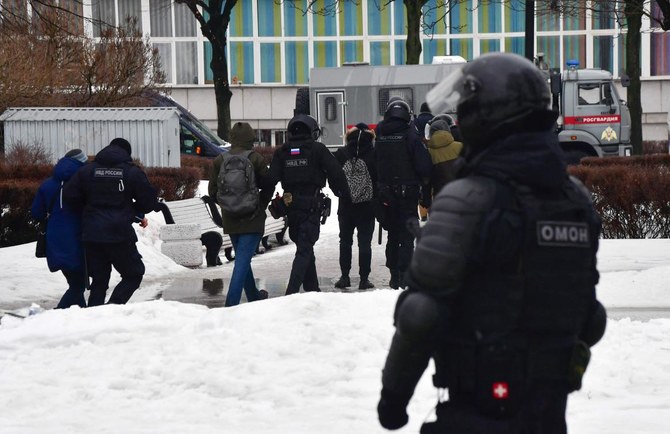
One of the operatives allegedly involved in the attempt to kill Alexei Navalny has confessed to his role in the plot, and has revealed that the Russian opposition leader was apparently poisoned via his underwear.
Navalny phoned two members of the team from Russia’s FSB spy agency, which allegedly tried to murder him. One recognised him immediately and hung up. The second operative, Konstantin Kudryavtsev, was seemingly duped into thinking he was talking to an aide working for a top FSB general.
The call was made hours before the investigative website Bellingcat published details last week of the eight FSB officers who allegedly poisoned Navalny.
Navalny survived the attempt to kill him in August and is recuperating in Germany.
Posing as “Maxim Ustinov”, a fictional aide, Navalny asked Kudryavtsev for details of the operation and demanded to know what had gone wrong.
Unaware that he was being spoofed, Kudryavtsev apparently confirmed the FSB was behind the poisoning. He said his colleagues had applied novichok to the “inner seams” of the opposition leader’s boxer shorts, when Navalny was staying in the Siberian city of Tomsk.
A reconnaissance team had previously visited the Xander hotel and switched off the CCTV cameras, Kudryavtsev said. Once the all-clear had been given, operatives deployed the poison. It had been previously thought Navalny may have been exposed to the nerve agent through a cup of tea or a cocktail.
It now appears likely the novichok was administered in the form of a spray or an ointment, either via the hotel’s laundry service or by FSB officers sneaking into Navalny’s hotel room. Navalny said he could not recall if the boxer shorts were among a delivery he got back from the laundry on 18 August.
Two days later, early on 20 August, Navalny wore the poisoned pants. He then travelled to Tomsk airport and boarded a flight to Moscow. Soon after takeoff he fell violently ill and collapsed. The plane made an emergency landing in Omsk and Navalny was taken to hospital and put on a ventilator.
Asked why he survived, Navalny was told it was probably because his plane had made an emergency landing. If he had continued to Moscow – a journey of another three hours or so – he would probably have died, Kudryavtsev said. There were “lots of unknowns and nuances”, he added.
“My understanding is they calculated everything with a margin,” he said, suggesting his superiors had got the poison dose right.
Kudryavtsev said he was sent five days later to Omsk to retrieve and sanitise Navalny’s clothes, including his underwear, and to remove all traces of novichok. On the call he told Navalny that the cleanup operation had been done effectively.
Navalny has demanded the return of his clothes from Russia. In September he complained that the FSB had destroyed possible evidence of its crime. He was airlifted from Russia to Berlin “completely naked”, he said.
“Considering novichok was found on my body, and that infection through contact is very likely, my clothes are a very important piece of evidence,” he said. “I demand that my clothes be carefully packed in a plastic bag and returned to me.”
After his collapse, colleagues from Navalny’s anti-corruption foundation bagged up items from his hotel room. Video taken at the Xander hotel shows them collecting empty water bottles, gingerly handling them using plastic gloves. These were sent to Germany for analysis.
Kudryavtsev told Navalny there were no traces of novichok on the bottles. According to Bellingcat, Kudryavtsev travelled to Omsk twice in the aftermath of the poisoning: once on 25 August and a second time on 2 October 2020. Phone records show he was in regular contact with Col Stanislav Makshakov, the FSB officer who allegedly commanded the operation.
European laboratories confirmed Navalny was poisoned with novichok, the nerve agent used in Salisbury against Sergei and Yulia Skripal. The apparent use of clothing as a delivery mechanism may explain why it took several hours for the poison to take effect – and why Navalny ultimately survived.
Last week Bellingcat identified three FSB operatives from a clandestine unit who travelled alongside Navalny to the Siberian city of Novosibirsk. They included two medical doctors – Alexey Alexandrov and Ivan Osipov – and Vladimir Panyaev, whose role appears to have been reconnaissance. The trio followed Navalny to Tomsk.
According to Bellingcat, citing flight and telecoms data, at least five other FSB operatives were involved. Its latest report mentions two further names, including a local chief in the FSB’s department who was photographed in the Omsk hospital where Navalny was treated.
The officer, Mikhail Evdokimov, works for a unit within the FSB’s Second Service, in charge of counter-terrorism and keeping constitutional order, Bellingcat reported. Western security officials have linked the Second Service to the Navalny plot. Last month the UK and EU sanctioned the FSB’s director Alexander Bortnikov.
On Friday, the Russian president, Vladimir Putin, acknowledged the FSB had tailed Navalny on multiple trips but said this was necessary since he was working for US intelligence – a claim Navalny denies. Putin ran the FSB before he became president.
Moscow has said it is yet to see evidence of a crime and declined to open an investigation. It suggests Navalny was poisoned in Germany, or while onboard the medical evacuation plane that took him in a coma to Berlin.
Officially, Russia has destroyed its chemical weapons. Last week, however, Bellingcat identified three state-run institutes that appear to be behind a covert nerve agent programme. All communicated closely with GRU operatives linked to the Salisbury plot.
One appears to have developed novel “nano-encapsulation techniques”. This “relatively new technology could permit a lethal toxin to be ‘packaged’ within a veneer of another substance, allowing both obfuscation and delayed onset of the poison,” Bellingcat reported.












